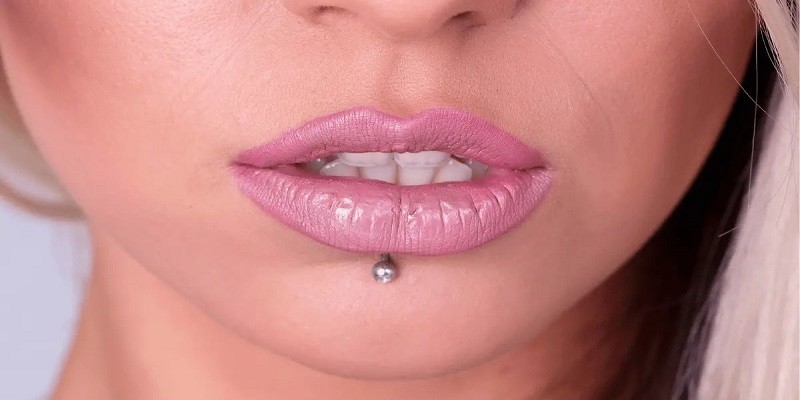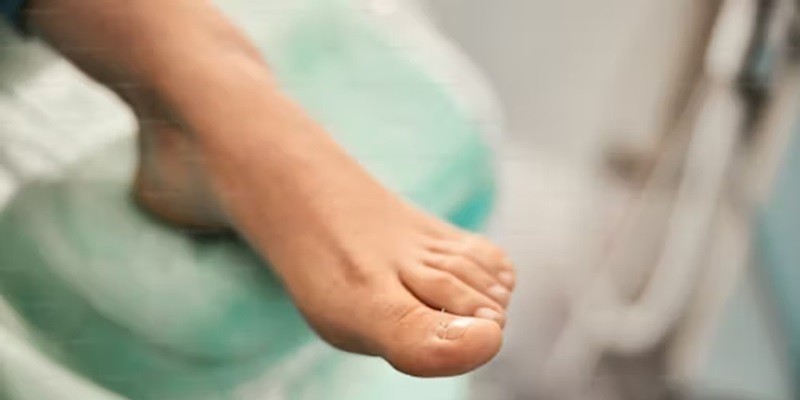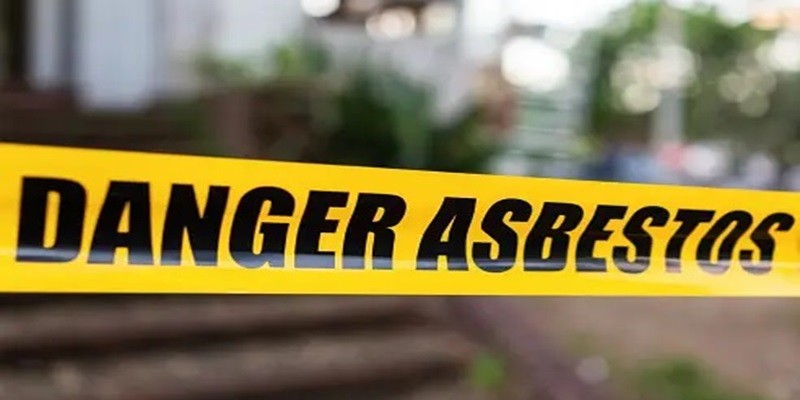To clean a lip piercing, gently clean the area twice a day using a saline solution or pierced-specific cleaning solution. Regular cleaning helps prevent infection and promote healing.
Now let’s dive into the details of cleaning a lip piercing. Lip piercings, whether it’s a labret, Monroe, or other type, require proper cleaning to prevent infection and promote healing. By following a daily cleaning routine using a saline solution or pierced-specific cleaning solution, you can keep your lip piercing clean and healthy.
We’ll discuss step-by-step how to clean a lip piercing, the best cleaning solutions to use, and some tips for maintaining proper hygiene during the healing process.
Important Steps And Tips For Maintenance
Maintaining a clean lip piercing is essential for healing and preventing infections. Follow these crucial steps and tips for effective cleaning: rinse your mouth with a saltwater solution, avoid touching or pulling at the piercing, gently clean with a mild soap and water solution, and rinse with clean water.
Additionally, avoid oral contact, especially during the healing process.
Cleaning a lip piercing is crucial to prevent infections and promote healing. By following the right steps and using suitable cleaning agents, you can ensure proper maintenance. Here are some important steps and tips to help you clean your lip piercing effectively:
Using A Sea Salt Solution:
- Create a saline solution by mixing 1/4 teaspoon of non-iodized sea salt into 8 ounces of distilled water. It’s essential to use distilled water to avoid impurities that can irritate the piercing.
- Fully dissolve the salt in the water, ensuring there are no visible particles.
- Dip a clean cotton ball or pad into the saline solution until it’s saturated.
- Gently press the soaked cotton ball against the piercing, allowing the solution to fully soak the area for a couple of minutes.
- Rinse the piercing with distilled water to remove any leftover salt residue. Pat dry with a clean paper towel.
Using a sea salt solution helps to cleanse the piercing and maintain a balanced saline environment that is conducive to healing.
Avoiding Harsh Cleaning Agents:
- Refrain from using harsh cleaning agents, such as alcohol, hydrogen peroxide, or iodine. These can dry out the piercing and cause irritation.
- Avoid using antibacterial soaps or solutions, as they may disrupt the natural healing process.
- Harsh cleaning agents can also kill beneficial bacteria that aid in preventing infections. Stick to a gentle cleaning routine to promote healing.
Gently Cleaning Around The Piercing:
- Before cleaning, always wash your hands thoroughly with antibacterial soap.
- Use a mild, fragrance-free liquid soap to gently cleanse the area around the piercing, including the jewelry. Avoid any excessive pressure or scrubbing, as it can cause damage.
- Rinse thoroughly to ensure no soap residue remains on or around the piercing.
- Pat dry with a clean paper towel or allow it to air dry.
- Do not rotate or twist the jewelry while cleaning. This can introduce bacteria and prolong the healing process.
Regular and gentle cleaning around the lip piercing helps remove any buildup or debris, reducing the risk of infection and promoting faster healing.
By following these important steps, you can maintain the cleanliness of your lip piercing and support its healing process. Remember to be consistent with your cleaning routine, as proper maintenance is essential for the overall health and longevity of your piercing.
Potential Complications And How To Deal With Them
Cleaning a lip piercing requires proper care to prevent potential complications. Regularly clean the piercing with a saline solution or mild soap and warm water. Avoid touching the piercing with dirty hands and refrain from using alcohol-based products. If any complications arise, consult a professional piercer or healthcare provider for appropriate advice and treatment.
Identifying Infections
Infections can occur in lip piercings, especially if proper aftercare measures are not followed. It’s crucial to be able to identify the signs of an infection to ensure prompt and appropriate treatment. Here are some key points to help you identify whether your lip piercing is infected:
- Redness and Swelling: If your lip piercing becomes significantly redder and more swollen than usual, it could be a sign of an infection.
- Excessive Pain or Discomfort: While some discomfort is normal during the healing process, if you experience ongoing or increasing pain around the piercing site, it might indicate an infection.
- Persistent Discharge: Any unusual discharge, such as pus or excessive crustiness, can be a sign of an infection.
- Increased Sensitivity: If the area around the piercing becomes highly sensitive or tender to touch, it may be a sign of infection.
- Abnormal Smell: An unpleasant odor coming from the piercing site can indicate an infection.
If you notice any combination of these symptoms, it’s crucial to take action promptly to prevent the infection from worsening.
Signs Of Healing
While it’s important to be aware of potential complications, it’s also essential to recognize the signs that your lip piercing is healing properly. Understanding the indications of healing will help alleviate unnecessary worry and give you peace of mind. Here are some signs that your lip piercing is on the right track to recovery:
- Reduced Swelling: As the healing progresses, the swelling around the piercing will gradually subside.
- Minimal Pain or Discomfort: Over time, the pain and discomfort associated with the piercing should diminish, with only occasional twinges during the healing process.
- Clear or Light-Colored Discharge: As the wound heals, any discharge should become less frequent and gradually transition from yellowish or bloody to clear or light in color.
- Formation of a Scab: A scab forming around the piercing site is a positive sign. This scab will eventually fall off on its own as part of the healing process.
- Reduction in Redness: With healing, the redness around the piercing site should gradually diminish.
Remember, healing timelines can vary from person to person, so patience is key. If you experience any of these positive signs, it indicates that your lip piercing is healing as expected.
Seeking Professional Help
In some cases, complications may arise that require the expertise of a professional piercer or healthcare practitioner. If you experience any of the following issues with your lip piercing, seeking professional help is highly recommended:
- Infection Symptoms Worsen: If the signs of infection become more severe or continue to worsen despite home care efforts, it’s crucial to consult a professional for appropriate treatment.
- Persistent Bleeding: Continuous or excessive bleeding that does not stop within a reasonable timeframe should be addressed by a professional.
- Excessive Pain and Swelling: If the pain and swelling around the piercing increase significantly or become unbearable, it’s important to seek professional advice.
- Migration or Rejection: If you notice that the jewelry is shifting, moving towards the surface, or your body is pushing it out, it could be a sign of migration or rejection. A professional piercer can evaluate the situation and provide guidance.
- Allergic Reactions: If you suspect an allergic reaction to the jewelry or any other material used in the piercing, a professional can help determine the best course of action.
Remember, professional help ensures that you receive expert advice tailored to your specific situation and guarantees the best possible care for your lip piercing.
Dos And Don’Ts For Lip Piercing Cleaning
Looking for tips on how to clean a lip piercing? Here are some dos and don’ts to follow for proper cleaning and care. Keep it clean, avoid touching with dirty hands, and use a saline solution or a gentle non-alcoholic mouthwash for washing.
Lip piercings are a popular form of self-expression that requires proper cleaning and care to minimize the risk of infections. Whether you’re a first-time lip piercing owner or a seasoned pro, it’s essential to follow the dos and don’ts of lip piercing cleaning.
By establishing a routine and avoiding common mistakes, you can ensure a safe healing process and maintain a healthy, beautiful lip piercing.
Aftercare Products To Use:
When it comes to cleaning your lip piercing, selecting the right aftercare products is crucial. Here are some preferred options:
- Saline solution: An excellent choice for daily cleansing as it effectively removes debris and promotes healing.
- Antibacterial soap: Opt for a mild, fragrance-free soap to avoid irritation.
- Sea salt soak: A natural alternative that helps reduce swelling and disinfect the piercing.
Remember to always read the product labels and follow the instructions provided.
Proper Hygiene Practices For Piercing:
Maintaining proper hygiene practices is key to preventing infections and promoting healing. Here are some guidelines to keep in mind:
- Wash your hands thoroughly with antibacterial soap before touching or cleaning your lip piercing.
- Use a cotton swab or clean cloth to apply aftercare products, ensuring they’re free of any dirt or bacteria.
- Gently clean around the piercing area, including both the outer and inner sides of the lip.
- Rinse your mouth with an alcohol-free, antimicrobial mouthwash after meals or whenever necessary. Avoid alcohol-based mouthwashes as they can irritate the piercing.
Mistakes To Avoid For Lip Piercing Care:
To ensure the best possible healing process, it’s important to avoid common mistakes when caring for your lip piercing. Here are the things you should steer clear of:
- Touching your piercing with dirty hands: This can introduce bacteria and lead to infection.
- Over-cleaning: While cleaning is essential, excessive cleaning can irritate the piercing and hinder the healing process. Stick to a routine and avoid going overboard.
- Using harsh products: Avoid using alcohol, hydrogen peroxide, or any strong chemicals on your lip piercing as they can cause irritation and delay healing.
- Disrupting the healing process: Avoid playing with or changing your jewelry before the piercing has fully healed, as this can lead to complications.
By following these dos and don’ts, you can ensure a clean and healthy lip piercing. Remember, every individual’s healing process may vary, so it’s important to listen to your body and seek professional advice if you experience any unusual symptoms or complications.
With proper care, your lip piercing can be a stunning addition to your style while maintaining optimal cleanliness and hygiene.

Credit: www.reddit.com
Frequently Asked Questions For How To Clean A Lip Piercing?
Do Lip Piercings Get Infected Easily?
Lip piercings can easily become infected due to their location and constant contact with bacteria.
Do You Clean The Inside Of Your Lip Piercing?
Yes, it is important to clean the inside of your lip piercing regularly for proper hygiene.
What Is The Best Solution To Clean Lip Piercings?
The best solution for cleaning lip piercings is to use a saltwater solution twice a day.
How Long Do Lip Piercings Take To Heal?
Lip piercings typically take about 6 to 8 weeks to fully heal.
How Often Should I Clean My Lip Piercing?
It is recommended to clean your lip piercing twice a day to prevent infection and promote healing.
Conclusion
Proper cleaning and maintenance of a lip piercing is crucial for ensuring its health and preventing any complications. By following the steps outlined and using saline solution or a mild saltwater solution, you can effectively remove any build-up of debris or bacteria and promote healing.
Remember to always wash your hands before touching your piercing and avoid using harsh chemicals or products that can irritate your skin. It is also important to avoid excessive touching, biting, or playing with the piercing to prevent infection. If you experience any signs of infection, such as redness, swelling, or discharge, it is important to seek medical attention promptly.
By incorporating the tips and techniques discussed into your daily routine, you can keep your lip piercing clean, healthy, and looking great. Happy piercing!











